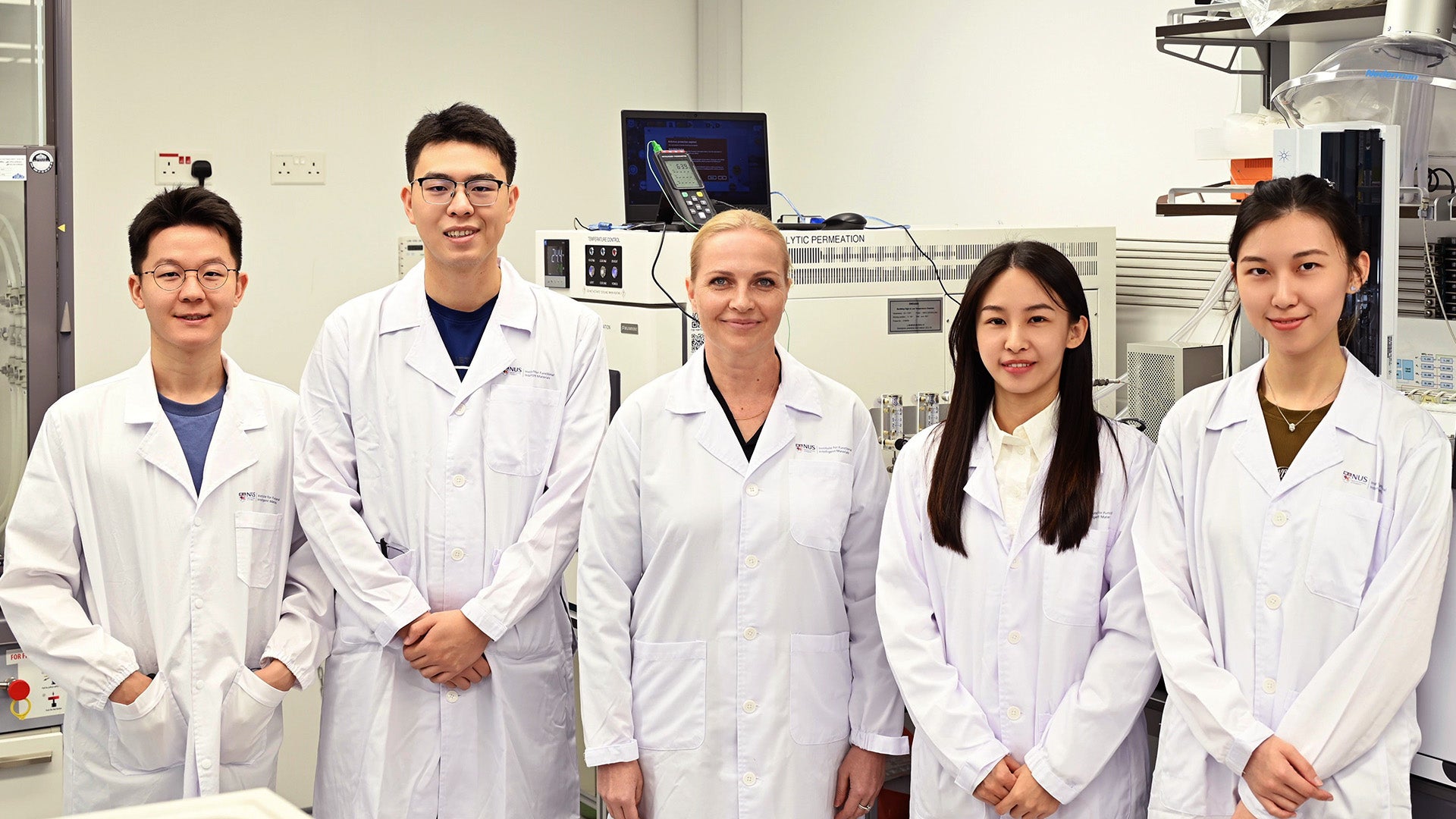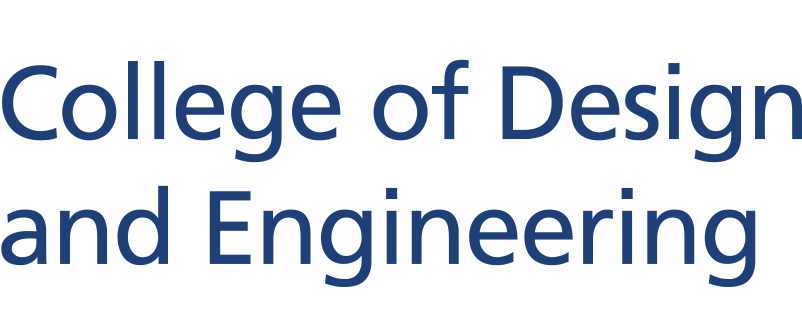
A new membrane technology developed by researchers at CDE overcomes a long-standing trade-off in gas separation, offering improved performance in hydrogen purification and carbon capture.
Membrane-based separation is an essential process in clean energy and environmental applications. However, conventional membranes often face a critical performance limitation: increasing permeability (the speed at which gas passes through) usually results in reduced selectivity (the membrane’s ability to separate different gases), and vice versa.
This trade-off has restricted the efficiency of gas separation processes in industrial settings.
To overcome this, a team of researchers from the Institute for Functional Intelligent Materials (I-FIM) and the Department of Materials Science and Engineering, led by Associate Professor Daria V. Andreeva, developed a new class of crumpled graphene oxide (cGO) membranes that achieve both high permeability and high selectivity. Their findings, published on 14 July 2025 in Nature Nanotechnology, mark a significant advance in the field.
Graphene oxide (GO) membranes are made of stacked layers that create nanochannels through which gases can travel. While these channels can be fine-tuned, the closely packed layers in conventional GO membranes tend to restrict gas flow, limiting their overall performance.
As a way around this, the research team introduced controlled crumpling into the structure of the GO membranes. By heating polystyrene substrates underneath the GO films, they triggered thermal shrinkage, which in turn caused the membranes to wrinkle. This generated a multidomain, crumpled morphology with spatially varied nanochannels.
“To evaluate the gas separation performance of these crumpled membranes, we carried out mixed-gas permeation experiments in our automated membrane characterisation lab (Membrane A-Lab),” said Dr Maxim Trubyanov, a senior researcher in Assoc Prof Andreeva’s group.
“By controlling the gas feed composition and environmental conditions, we were able to accurately measure both permeability and selectivity across a range of temperatures and humidity levels,” added Dr Musen Chen, current Lab manager at I-FIM.
Speed and precision
The new membranes allow hydrogen to pass through at exceptionally high rates, while still effectively filtering out carbon dioxide. In laboratory tests, they achieved a level of performance that exceeds what current polymer and advanced material membranes can offer, combining both speed and precision in gas separation. Under mixed-gas conditions, the membranes reached hydrogen–carbon dioxide selectivity values as high as 113.5.
“This simultaneous enhancement in permeability and selectivity was unprecedented,” explained Pengxiang Zhang, first author and PhD candidate in Assoc Prof Andreeva’s group.
The idea for the crumpling method was inspired by earlier research on wrinkled gold films. “We realised that this polymer-based compression method could be adapted to generate crumpled GO membranes in a scalable and reproducible way,” said Dr Qian Wang, second author and recent PhD graduate under Assoc Prof Andreeva’s supervision.
“Most importantly, this is achieved using industrially relevant techniques without compromising mechanical robustness or long-term stability,” added Yixin Zhang, PhD candidate and co-author.
Further analysis showed how the crumpled structure supports this performance. The membranes contain areas with slightly different spacing between the graphene oxide layers. The wider regions allow gases to be absorbed quickly, while the narrower regions help filter specific molecules, working together to improve overall separation.
In addition, the crumpling process creates ultra-small holes, just large enough for hydrogen molecules to pass through. These nanoholes form naturally as the graphene oxide layers shift and react during crumpling, and they help block larger gases like carbon dioxide. This adds another layer of selectivity to the membrane.
Alongside their strong performance, the membranes are also practical for real-world use. They are flexible, self-supporting, and can operate under challenging conditions, including very humid environments and sub-zero temperatures. A cost analysis showed that the membranes could produce highly pure hydrogen (99.5%) at a relatively low operating pressure, with a carbon removal cost of just US$0.12 per kilogram of CO₂. This makes the technology both energy-efficient and economically competitive for industrial applications.
By combining mechanical design with tailored chemical functionality, the team’s research outlines a pathway for using two-dimensional materials to assemble membranes for sustainable energy and environmental technologies.





